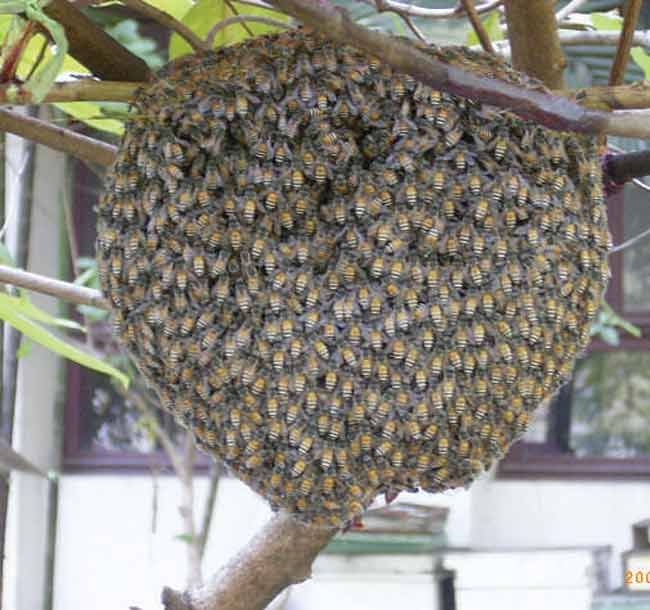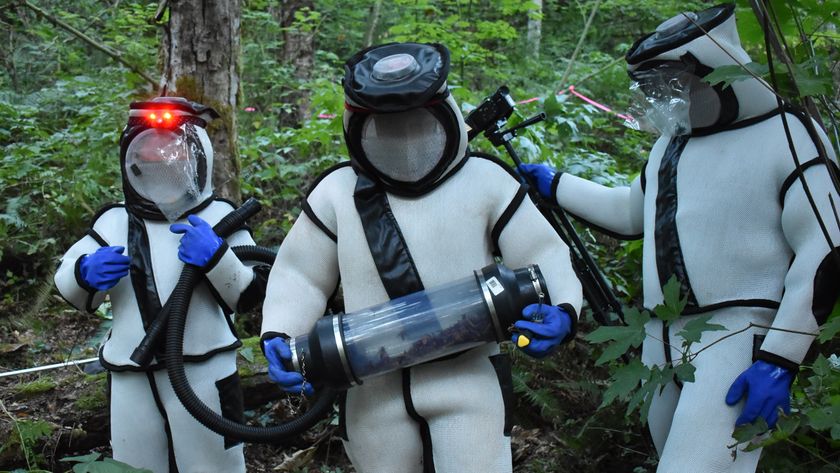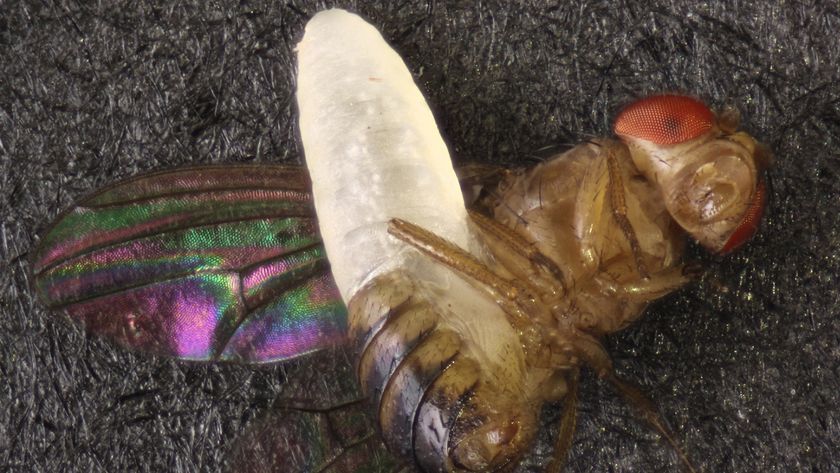Busy as Bees: Reproductive Chaos after Queen's Death

Female honeybees follow a simple code: only the queen lays eggs. If a female worker breaks the code, the other females quickly devour her rogue eggs. The queen even releases chemical signals that render other females' ovaries inactive.
But once the queen dies, the code goes out the window and chaos reigns.
Within a week of her death, her chemical signals wear off, the workers' ovaries become active, egg-policing stops and the workers rear one last batch of males before the whole colony dies.
New research shows that among Asian dwarf red honeybees, Apis florea, even females from other hives get in on the action.
To determine just how many interloping A. florea bees take advantage of a queenless colony, Benjamin Oldroyd of the University of Sydney in Australia collected four wild A. florea nests and transplanted them to a location with many bee colonies.
Oldroyd and his colleagues took samples of worker bees from each colony and used genetic techniques to determine the percentage of natives versus outsiders in the nest. Then they removed the queen from each nest and returned four weeks later to measure changes in the population.
Before the removal of the queen, 2 percent of the workers were unrelated, and none of these had activated ovaries.
Sign up for the Live Science daily newsletter now
Get the world’s most fascinating discoveries delivered straight to your inbox.
Once the queen was out of the picture, unrelated workers increased to 4.5 percent. And among workers with activated ovaries, unrelated workers held a significant lead over the natives, 43 percent to 18 percent.
And while the non-natives accounted for a small percentage of the total number of workers, they had better reproductive success and were responsible for 36 percent of the eggs and 23 percent of the pupae.
This split, according to the authors, is evidence that invading workers are seeking out queenless colonies in order to lay eggs.
Despite all the extra eggs, the colony still dies. Females do all the pollen foraging, honey producing, and defend the hive. Since only the queen can produce females, the colony cannot survive without her. The sterile worker females can lay eggs, but they can't mate with the male drones, and unfertilized eggs yield only males.
A. florea nests are suspended from twigs and built on a single honeycomb. According to researchers, this structure makes the nest easily accessible to invading workers.
The research is reported in the Oct. 6 issue of the journal Nature.












